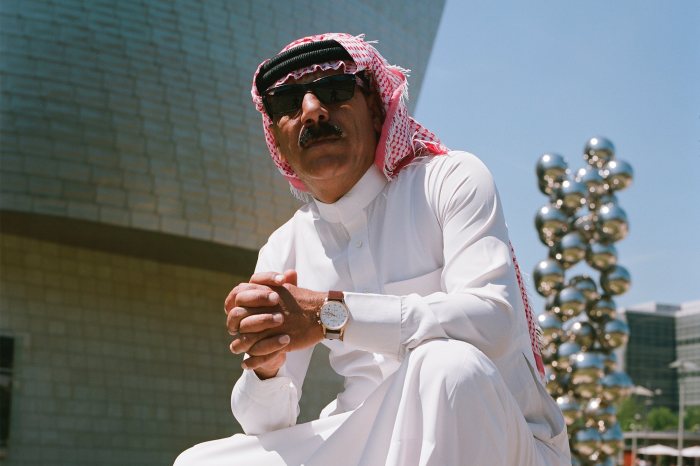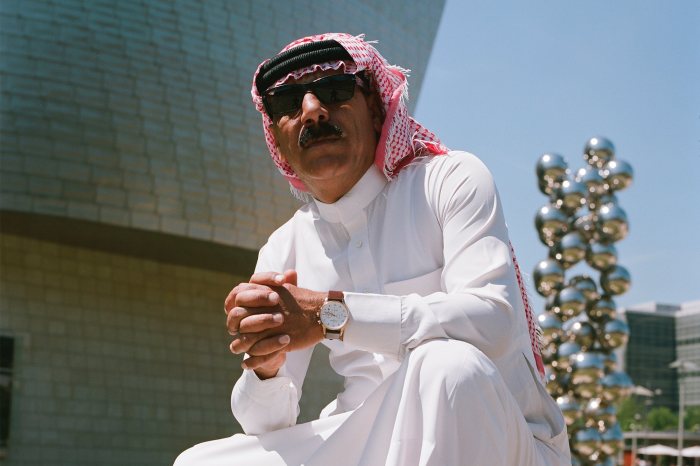Carry Luggage on Top of Your Car is a topic that demands careful consideration, especially when dealing with safety, legality, and practicality. This comprehensive guide dives deep into the nuances of transporting luggage atop your vehicle, examining the potential risks and rewards, from securing your cargo safely to comparing it with other options.
We’ll explore essential safety measures, legal considerations, practical procedures, and alternative transportation methods to help you make an informed decision about carrying your luggage on top of your car.
Safety Considerations: Carry Luggage On Top Of Your Car
Carrying luggage on top of your car can be a convenient way to transport belongings, but it’s crucial to prioritize safety. Proper planning and execution are essential to mitigate potential risks and ensure a smooth and secure journey. Ignoring these considerations can lead to significant problems, from minor inconveniences to severe accidents.Understanding the potential dangers and implementing appropriate safety measures is paramount for both your well-being and the safety of others on the road.
This section delves into the critical aspects of securing luggage and navigating the challenges of wind resistance and aerodynamic factors.
Potential Dangers of Rooftop Luggage
The inherent instability of luggage carried on a roof rack presents several risks. Wind gusts, especially at higher speeds or in turbulent conditions, can easily dislodge the load. Improper securing methods can lead to the luggage falling off, potentially causing damage to property, injury to people, or even causing a traffic accident. Unsecured cargo can also become airborne debris, endangering other road users.
The risk of cargo shifting during transit is also significant, affecting the stability and control of the vehicle. Improper loading techniques, inadequate securing mechanisms, and exceeding weight limits are all factors contributing to the potential dangers of carrying luggage on top of a vehicle.
Securement Methods and Effectiveness
A variety of securement methods are available, ranging from straps and bungees to specialized tie-down systems. The effectiveness of these methods varies considerably depending on the type of luggage, the roof rack system, and the prevailing conditions. Strong, high-quality straps and tie-downs are critical for securement. Proper tensioning of these straps is crucial to ensure that the luggage is adequately held in place.
Cargo nets and specialized luggage carriers can provide additional support, preventing sliding and shifting. The use of additional anchoring points, like extra straps or clips, can significantly enhance the security of the load. Using appropriate and well-maintained securement equipment is vital for preventing cargo from shifting or falling off.
Wind Resistance and Aerodynamic Factors, Carry Luggage on Top of Your Car
Wind resistance significantly impacts the stability of rooftop luggage. At higher speeds, the force of the wind can become substantial, increasing the risk of dislodging the load. The shape and aerodynamic properties of the luggage itself, as well as the design of the roof rack, play a crucial role in determining the amount of wind resistance experienced. Luggage that is bulky or irregular in shape can create more drag and instability.
Roof racks that are properly designed to minimize wind resistance can greatly enhance the stability of the load.
Weight Limits and Load Capacity Assessment
Before loading any luggage, it’s essential to assess the weight limits of your car’s roof rack system and the overall luggage capacity. Exceeding these limits can compromise the structural integrity of the rack and increase the risk of failure. Consult your vehicle’s owner’s manual for specific weight limits. This manual will provide critical information on the weight capacity of the roof rack, ensuring you do not exceed it.
Use reliable weighing scales to accurately determine the weight of the luggage. Adding extra safety margins for potential weather conditions or uneven road surfaces is also advisable. Careful consideration of weight limits is crucial for ensuring a safe and secure journey.
Proper Loading Techniques for Optimal Stability
Loading luggage onto a roof rack requires careful attention to detail. Distribute the weight evenly across the rack to maintain balance. Heavier items should be placed lower on the rack and closer to the vehicle’s center of gravity. Ensure that the load is properly secured using appropriate straps and tie-downs, and that all straps are taut. Using appropriate straps is key to securing the luggage properly.
Avoid overloading the roof rack, as this can compromise its structural integrity and compromise the stability of the cargo.
Comparison of Roof Rack Types
| Roof Rack Type | Safety | Load Capacity |
|---|---|---|
| Box | Generally good, if properly secured. | High |
| Basket | Good, but securing can be challenging. | Moderate |
| Bars | Good, if properly secured. | Moderate to High |
Different types of roof racks offer varying degrees of safety and load capacity. The choice of rack type should be carefully considered based on the type and amount of luggage to be transported. Proper installation and securement are essential regardless of the type of rack used.
Legal and Practical Implications
Carrying luggage on top of your car, while seemingly convenient, comes with a complex web of legal and practical considerations. From visibility and safety to insurance coverage and financial implications, understanding these factors is crucial for a smooth and safe experience. Ignoring these details can lead to costly mistakes or even dangerous situations.The legality of rooftop cargo varies significantly by jurisdiction.
Local traffic laws often dictate maximum allowable cargo weight and dimensions, as well as specific requirements for securing the load. Unsecured or improperly loaded cargo can lead to fines or even legal repercussions.
Relevant Laws and Regulations
Different jurisdictions have different regulations regarding the weight, size, and securing of cargo carried on top of vehicles. These regulations are designed to prioritize road safety by preventing cargo from falling or shifting, which can cause accidents. Local municipalities and state governments usually maintain detailed regulations on this topic, which are available online or through local motor vehicle departments.
It is essential to consult these resources for precise details in your area.
Visibility Implications
Carrying luggage on top of a vehicle significantly reduces the driver’s field of view. Obstructions created by oversized or poorly secured luggage can obscure crucial parts of the road, potentially hindering safe maneuvering and increasing the risk of accidents. Drivers must be aware of this decreased visibility and adapt their driving style accordingly. The size and shape of the luggage also influence the amount of obstruction.
Large, bulky items like kayaks or camping gear significantly impede the driver’s view compared to smaller, more compact boxes.
Insurance Implications
If the luggage falls off the vehicle and damages another car or property, the driver’s insurance coverage may be affected. Insurance policies often exclude or limit coverage for cargo carried on the roof, especially if it is not properly secured. It’s crucial to check your insurance policy details to understand the extent of coverage for rooftop cargo and to ensure that you are adequately protected.
In some cases, additional insurance coverage may be required.
Carrying luggage on top of your car can be a space-saving solution, but it’s crucial to ensure the load is secure. Sadly, news recently hit about the passing of Anita Pallenberg, actress and Keith Richards’ ex-partner, at 73. This news reminds us that even with the best planning, life throws curveballs, and sometimes, even the most well-organized plans need a little extra attention.
Regardless, careful luggage placement remains paramount when driving with cargo on top.
Cost and Benefit Comparison
Transporting luggage on a car roof is often more affordable than using professional shipping services in short distances. However, factors such as the distance, volume, and weight of the luggage significantly impact the overall cost. Alternatives like car trailers or cargo vans can provide a larger and more secure space, but they also come with higher upfront costs and potentially increased fuel consumption.
Comparing the costs of different methods based on your specific needs and travel plans is essential.
Impact of Luggage Size and Shape
The size and shape of the luggage directly affect the vehicle’s stability. Large, oddly-shaped items can shift and cause instability, while smaller, more uniform items are generally less problematic. Consider the weight distribution of the cargo and how it impacts the car’s center of gravity. Excessive weight or an uneven distribution can lead to loss of control and potentially dangerous situations.
Potential Damage to the Car
Rooftop cargo can cause significant damage to the car’s paint job and roof. The weight and pressure of the cargo can cause scratches, dents, and even damage to the roof’s structural integrity over time. Proper securing and the use of roof racks are crucial to minimize the risk of such damage. Roof racks, when properly installed and used, can help reduce this risk, as well as the risk of cargo shifting or falling.
Comparison of Transportation Costs
| Transportation Method | Estimated Cost (per trip) | Pros | Cons |
|---|---|---|---|
| Roof Rack | $20-$50 | Affordable, readily available | Limited cargo space, risk of damage |
| Car Trailer | $50-$150 | Larger cargo space, greater security | Higher initial cost, potential fuel consumption increase |
| Shipping Service | $50-$200+ | Most secure, often door-to-door delivery | Most expensive option, less flexibility |
This table provides a general comparison. Actual costs will vary based on the distance, weight, size of the cargo, and specific services. Thoroughly research different providers and services before making a decision.
Practical Procedures and Methods

Carrying luggage on top of your car can be a convenient option for road trips and vacations. However, it’s crucial to understand the practical procedures to ensure safety, prevent damage, and maintain the integrity of your vehicle and cargo. Proper loading, securing, and packing techniques are paramount for a smooth and enjoyable journey.
Loading Luggage Onto the Roof Rack
Loading luggage onto a roof rack requires careful planning and execution. Begin by ensuring the roof rack is securely mounted to your vehicle. Next, assess the weight of your luggage and distribute it evenly across the rack. Always check the manufacturer’s guidelines for weight limits. Start loading heavier items in the center, gradually adding lighter items towards the edges.
This balanced distribution prevents the car from swaying during travel.
Securing Luggage to the Roof Rack
Proper securing of luggage is essential to prevent it from shifting or falling off during the journey. Use high-quality straps and tie-downs that are designed for this purpose. Ensure straps are tightly fastened and that the tie-downs are correctly positioned and angled to secure the luggage in place. Employ a crisscross pattern for maximum security. Use multiple straps if needed.
Regularly check the tightness of straps and tie-downs throughout the trip.
Luggage Packing for Optimal Weight Distribution
Packing luggage for optimal weight distribution is crucial for a safe and stable journey. Pack heavier items closer to the car’s center and lighter items towards the edges. Use packing cubes or containers to group items and make packing more efficient. Avoid overfilling any single bag. Distribute items evenly within the bags.
Use packing aids such as compression bags to reduce the overall volume of luggage. This prevents the car from swaying and enhances the safety of the passengers and the cargo.
Regular Checks for Wear and Tear
Regular checks of the luggage and roof rack for wear and tear and damage are vital. Inspect the roof rack for any signs of damage, such as dents, cracks, or loose fasteners. Check the straps and tie-downs for any signs of wear, stretching, or fraying. If you find any damage or signs of wear, immediately address the issue before continuing the trip.
Checking regularly prevents potential accidents and ensures a safe journey.
Preventing Water Damage to Luggage
Water damage to luggage can be a significant concern during travel. To prevent this, use waterproof covers or bags for all items that are susceptible to moisture. Ensure luggage is loaded and secured in a manner that prevents rain from entering the luggage compartment. Keep an eye out for leaks or potential sources of water during the trip.
Using waterproof luggage and keeping it well-sealed can help avoid issues with moisture.
Optimal Luggage Arrangement
Optimal luggage arrangement depends on the car model and luggage size. For compact cars, smaller luggage items are preferable. Large SUVs can accommodate larger quantities of luggage. When loading, consider the shape and size of the luggage and how it will fit on the roof rack. If the luggage is bulky, it may be best to use specialized carriers for optimal weight distribution and safety.
Ensure the arrangement prevents the vehicle from tilting or swaying.
Types of Straps and Tie-downs
| Strap/Tie-down Type | Suitability for Luggage Types |
|---|---|
| Polyester Straps | Suitable for most luggage types, including soft-sided bags. |
| Nylon Straps | Durable and resistant to wear and tear; good for heavy luggage. |
| Cargo Nets | Excellent for securing bulky items and preventing shifting. |
| Tie-downs with Cam Locks | Best for heavy luggage and providing secure and adjustable tension. |
Proper selection of straps and tie-downs is essential to secure luggage effectively. Consider the type of luggage, its weight, and the size of the roof rack when choosing the appropriate straps and tie-downs.
Alternatives and Comparisons

Rooftop luggage transport offers a quick and potentially cost-effective way to move belongings. However, other options exist, each with its own set of advantages and disadvantages. This section explores these alternatives, considering cost, environmental impact, space constraints, and suitability for various vehicles and cargo types.Exploring alternative methods of transporting luggage provides a more comprehensive understanding of the available choices.
Comparing these methods allows for a more informed decision based on individual needs and circumstances.
Alternative Transportation Methods
Different methods of transporting luggage cater to varying needs and preferences. The most common alternatives to rooftop luggage carriers include trailers, moving services, and public transportation. Each method presents a unique trade-off between cost, convenience, and environmental impact.
- Trailers: Trailers provide a dedicated space for larger quantities of luggage and offer increased stability compared to rooftop carriers. They are well-suited for transporting substantial amounts of goods, but require a vehicle capable of towing and careful consideration of towing capacity and weight limits. Trailer use can increase fuel consumption compared to a vehicle without a trailer, especially for longer distances.
- Moving Services: Professional moving services offer specialized equipment and trained personnel to handle large or delicate items. They often provide packing, loading, and unloading services, simplifying the process. The cost of moving services can vary depending on the distance, volume, and type of items transported. Moving services are often the most convenient option for large or complex moves.
- Public Transportation: Public transportation, like trains or buses, can be a cost-effective option for shorter distances, especially for lighter luggage. It is environmentally friendly but often limited in space and can be time-consuming. Accessibility to public transport and the specific routes available should be considered when choosing this method.
Cost Comparison
The cost of transporting luggage varies significantly depending on the chosen method. Rooftop carriers, while potentially lower in upfront cost, may incur additional costs for accessories and installation. Trailers, while having higher upfront costs, offer the advantage of increased carrying capacity. Moving services have variable costs, often calculated based on the volume and distance of the move. Public transportation often has a flat rate or fare based on the distance and type of ticket.
Time spent arranging and executing the transport must also be considered.
Environmental Impact
The environmental impact of each transportation method varies. Rooftop carriers, if properly secured and loaded, typically have a lower impact than trailers for short distances. However, for long distances, trailers can result in a higher fuel consumption. Moving services, depending on their logistics and vehicle choices, can have a greater environmental footprint than rooftop carriers or public transportation.
Carrying luggage on top of your car can be a surprisingly practical option, especially if you’re headed to a cozy ski lodge just to be like you. Ski lodges often have limited space, so having your gear readily available is a lifesaver. Plus, it frees up valuable trunk space for all the other essentials, making your trip smoother and more enjoyable.
Just be sure to secure the luggage properly for safety and to avoid any annoying wind resistance!
Public transportation, if used efficiently, minimizes individual carbon emissions. The environmental impact of each choice should be a crucial consideration.
Carrying luggage on top of your car can be a real hassle, but it’s often the only option for those epic road trips. You know, the kind of journeys that make you want to crank up some soulful, bluesy rock like Son Volt’s honky tonk tunes. It’s a balancing act, though, between the need to maximize space and the potential for a wobbly ride.
Luckily, the right roof rack and secure straps can make all the difference for a stress-free journey.
Space Constraints and Flexibility
The amount of space available and the flexibility to move items vary significantly between methods. Rooftop carriers are relatively limited in space and flexibility. Trailers provide greater space and flexibility, but require a suitable vehicle for towing. Moving services offer the greatest flexibility, with professional handling of items. Public transportation, due to limited space, is generally only suited for small, lightweight items.
The type of items being transported should be considered, as some items may be more suitable for certain transport methods.
Suitability of Vehicles and Luggage
Not all vehicles are suitable for rooftop carriers, nor are all luggage types. Vehicles with low roof profiles, limited load capacity, or inadequate structural integrity should avoid rooftop carriers. Likewise, excessively large or fragile items might not be appropriate for rooftop carriers. Trailers are more suitable for vehicles with adequate towing capacity, while moving services are versatile for any type of cargo.
Public transportation is most effective for compact and light luggage.
Comparison Table
| Transportation Method | Pros | Cons |
|---|---|---|
| Rooftop Carrier | Potentially cost-effective, easy to implement for short distances. | Limited space, potential for damage to vehicle and cargo, wind resistance. |
| Trailer | Increased space and stability, suitable for large quantities. | Higher upfront cost, requires towing capacity, greater fuel consumption. |
| Moving Service | Professional handling, packing and unpacking services, suitable for various items. | Higher cost, less control over transport. |
| Public Transportation | Cost-effective for shorter distances, environmentally friendly. | Limited space, time-consuming, accessibility considerations. |
Visual Aids and Illustrations
Properly loading luggage onto a car roof rack is crucial for safety and preventing damage to both the vehicle and the cargo. Visual aids are essential to understand the various aspects of this process, from rack types to securement techniques. Effective illustrations make the entire procedure clear and understandable.Visual aids help to grasp the complexities of safe luggage transport, making the practical steps easily digestible and memorable.
They transform abstract concepts into tangible representations, providing a clearer picture of how to execute each step safely and effectively.
Properly Loaded Roof Rack
Visualizing a properly loaded roof rack is vital for safety. Imagine a sturdy roof rack with crossbars securely fitted to the vehicle’s roof. Different sized boxes, suitcases, and duffel bags are stacked and secured on the rack, with the heavier items positioned lower and closer to the car. All luggage is properly strapped down with multiple tie-downs, ensuring no movement during travel.
The luggage should be distributed evenly across the rack, avoiding any imbalance that could compromise the vehicle’s stability.
Roof Rack Systems
Understanding the different roof rack systems is crucial for proper installation and luggage loading. A diagram illustrating various systems would showcase the differences in mounting mechanisms. For instance, some systems use clamps, while others utilize clips or bolts. The illustration should clearly label each part of the system and show how it interacts with the car’s roof.
Different systems might have varying weight capacities, which should be clearly displayed.
Potential Damage from Improper Securing
An image depicting the consequences of improperly secured luggage is vital for emphasizing the importance of proper loading and securing. The illustration should show a car with loose luggage shifting on the roof rack. The luggage might be damaged or even detached, potentially causing damage to the car’s paint or windshield. The image should highlight the risks involved in insufficient securing.
Luggage Arrangement for Stability
Effective luggage arrangement directly impacts the vehicle’s stability. A visual representation should demonstrate the proper arrangement of luggage on the roof rack. Heavier items should be positioned closer to the car’s body and lower on the rack, while lighter items can be placed higher and more towards the outer edges. The illustration should show multiple examples of how to arrange luggage for stability, using different shapes and sizes of luggage.
Vehicle Appearance with Luggage
A visual representation of a vehicle with various luggage types on the roof rack can illustrate how to achieve a visually appealing and safe setup. This would showcase how luggage should be arranged for a balanced appearance and optimized visibility. The illustration should demonstrate how different types and colors of luggage can be arranged on the roof rack, keeping the appearance aesthetically pleasing.
Importance of Clear Visibility
Clear visibility while driving is paramount. A diagram demonstrating the impact of luggage on the driver’s view would emphasize the importance of careful loading and placement. This illustration could show the obstructed view when luggage is improperly positioned, potentially causing accidents. The visual should clearly show how the luggage placement affects the driver’s field of vision and the importance of ensuring an unobstructed view for safe driving.
Conclusion
In conclusion, carrying luggage on top of your car can be a viable option, but it’s crucial to prioritize safety and legality. Weighing the pros and cons, understanding the potential risks, and employing the right techniques are paramount. This guide provides a thorough overview to help you make an informed decision. Remember to prioritize safety, legal compliance, and proper planning to ensure a smooth and worry-free journey.




















![[REVIEW] Star Trek: Discovery Season 2 Finale: Going Boldly Into the ... Star trek discovery fall finale explores ptsd in a huge way](https://master-help.com/wp-content/uploads/2025/06/sonequa-martin-green-star-trek-discovery-1.jpg)







